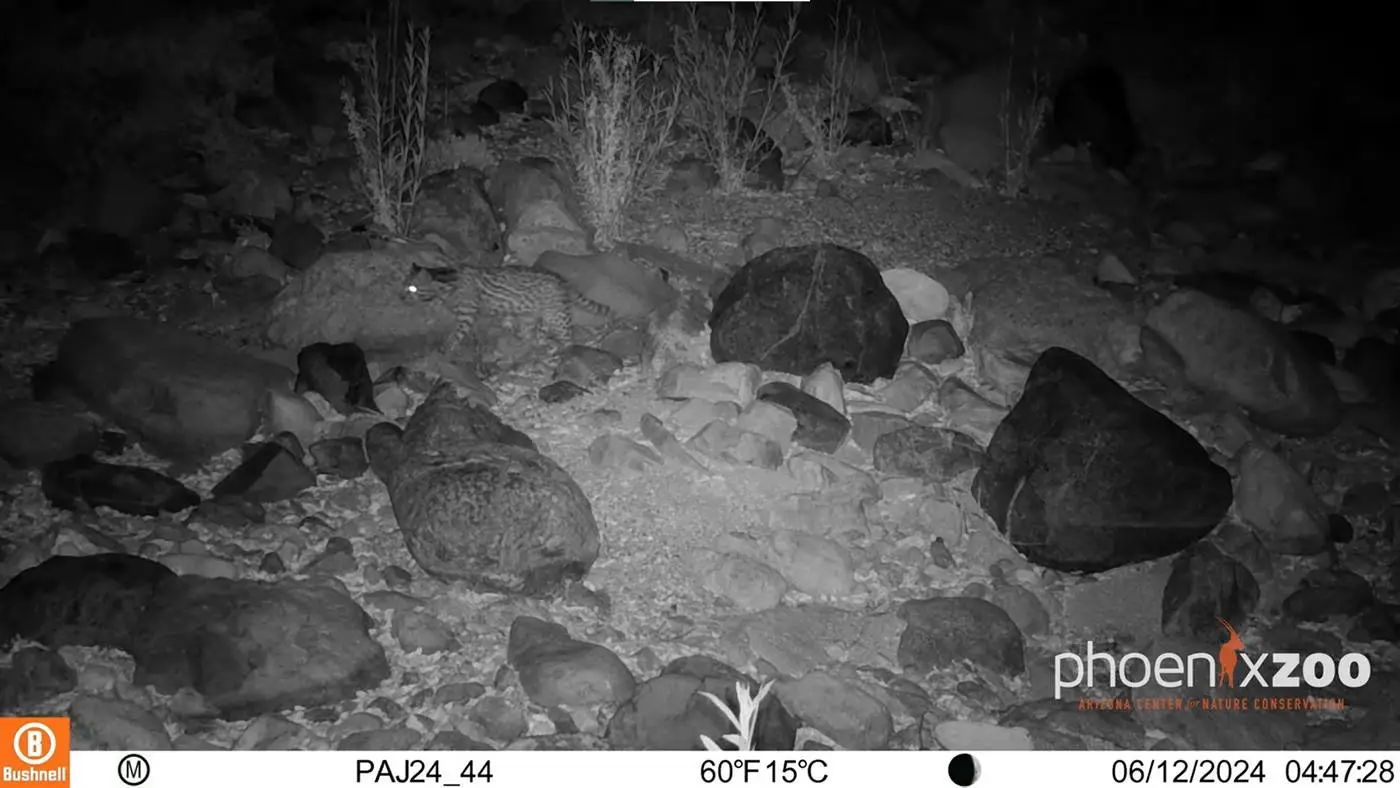“From the heart of Arizona comes an extraordinary wildlife discovery: an ocelot, one of the most iconic small wildcats, has been spotted in the Atascosa Highlands of Southern Arizona’s Coronado National Forest.
While ocelots are predominantly native to South and Central America, their historical range once extended north of the Rio Grande. This recent sighting in Arizona marks a significant event for the region.
The elusive feline was captured on one of 50 camera traps set by the Phoenix Zoo as part of a wildlife monitoring initiative. The Atascosa Highlands, with its mix of thornscrub and scattered oak woodlands on the Tumacacori, Atascosa, and Pajarito mountains, offers an ideal habitat for this nocturnal predator.
Field research project manager Kinley Ragan, who was replacing batteries at the camera trap site, made the exciting discovery while reviewing footage. Despite the 95-degree heat and a 40-minute hike to the location, Ragan’s anticipation and excitement were palpable. “The ocelot video was one of the last clips I reviewed, and it gave me chills,” Ragan said. “I couldn’t believe it at first, but soon I was grinning with pride over this incredible find.”
The Arizona Game and Fish Department (AZGFD) has confirmed the sighting. Regional Nongame Specialist Tracy McCarthey noted that a pelage spot analysis compared this ocelot with known individuals in the state and previous records, affirming it as a new presence in the area. Ocelots have been listed as Endangered in the U.S. since 1972 and are rarely spotted in Arizona. This particular ocelot was observed in desert scrub at lower elevations than usual.
In contrast, another ocelot has been consistently recorded over the past year in the Huachuca mountain range, more than 50 miles away from this new sighting. “Finding evidence of a new ocelot in southern Arizona reinforces our commitment to preserving wildlife and their habitats in this region,” said Phoenix Zoo President and CEO Bert Castro. “We’re eager to analyze additional camera data to learn more about conservation needs in the borderlands.”
Last year’s camera trap survey in the Highlands revealed 21 mammal species, but no ocelots or jaguars. With this new evidence, the zoo plans to expand surveys and conduct DNA analysis from nearby water sources to gain deeper insights into ocelot activity in the area and uncover more about this captivating landscape.
“We’re thrilled to investigate whether this sighting is a rare occurrence or if there are more ocelots in the region,” Ragan told the Arizona Republic. “This discovery opens up new possibilities for what we might find in this stunning desert environment.”
